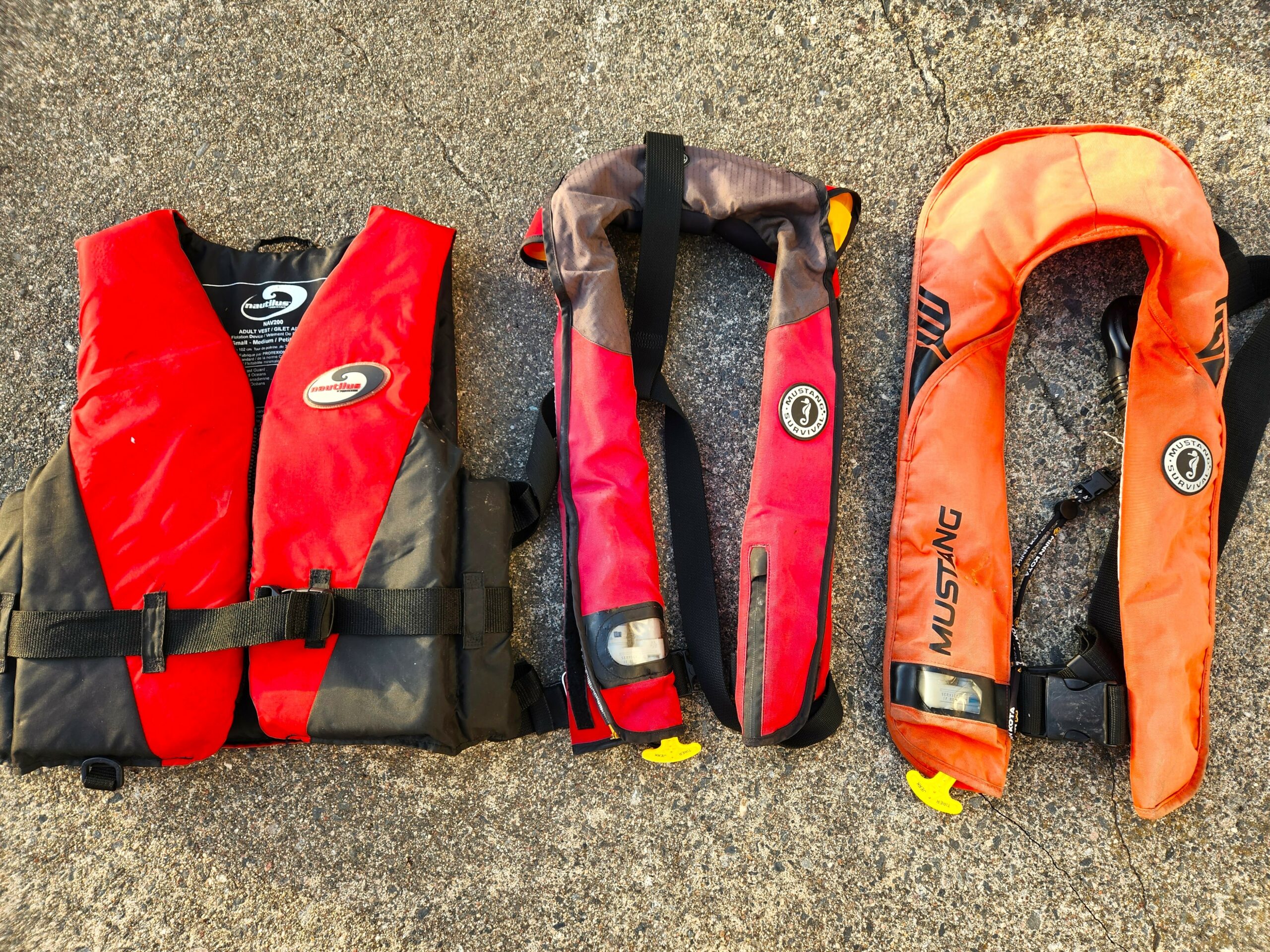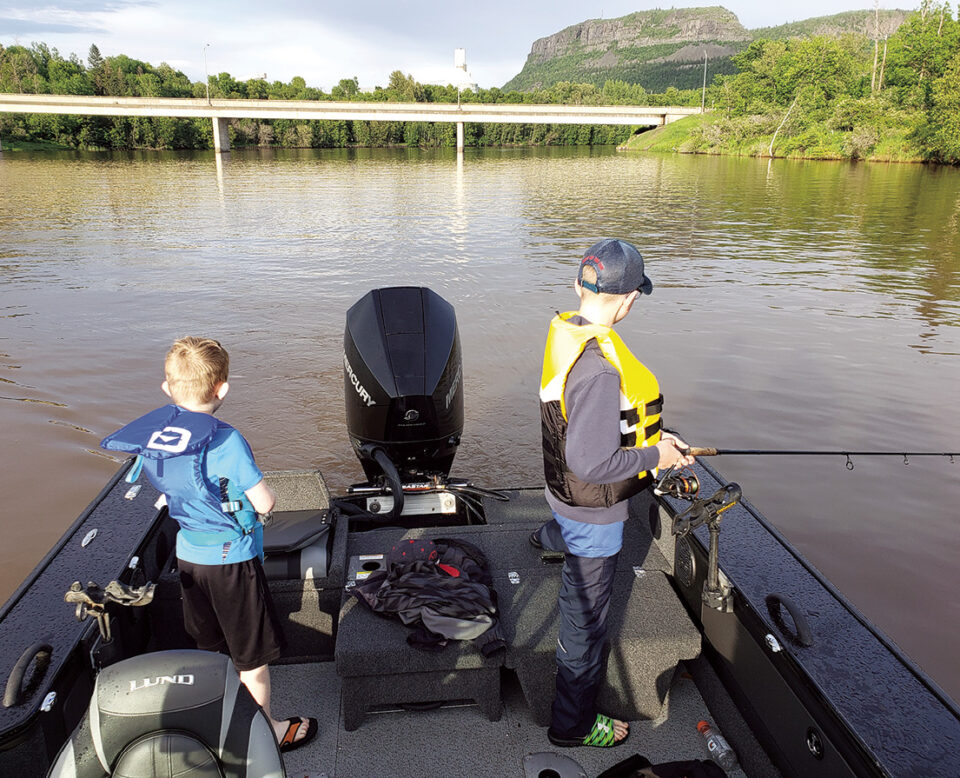The morning fish had been slow, and the early afternoon wasn’t going much better. So, my father, Gordon Sr., my eldest son Devin and I made the decision to pull the pin. Our total travel time across the lake would be a half an hour or less—or so we thought.
As we headed towards the launch, I noticed something far off in the water. At first, I thought it was a deer swimming. Then, it dawned on me what I was actually seeing. Someone was waving their hand above the water to get our attention. My heart sunk.
Moments later, we found three men clinging to a 12-foot boat. One man was able to speak, the other two were not. They’d all been in the water for at least an hour and hypothermia had set in. The next couple hours were among the scariest I’ve ever experienced. My dad, son and I had to get the three large men out of the water, warmed up, and comfortable enough for a slow boat ride. We then had to get them back to safety across 7 miles of big water in a badly overloaded craft.
The story had a happy ending as we were able to call for ambulances to meet us, but it could have easily gone the other way. None of the three men had been wearing life jackets. There had been one small life jacket tied to a rope that was attached to the boat. I shudder to think what would have happened had we not seen them. That incident 13 years ago reinforced what I’ve believed for decades: Wearing a Personal Floatation Device (PFD) in a boat is the easiest way to avoid a needlessly tragic incident on the water.
I haven’t always felt this way about life jackets. For many years, I rarely, if ever, wore a PFD while in a boat. When I look back at early fishing pictures, there is rarely a life jacket in sight. My buddies and I each had a “flotation cushion” as our life jacket, not that it would have done much had we capsized. There were times I did wear a PFD, mainly on Lake Superior, where a floater jacket would keep you warm. But for the most part, a PFD was not worn, even in relatively risky situations like early season trout fishing in a canoe. The fact that I’m not a great swimmer and I don’t float didn’t stop me from going life jacket free.
The transformation from sitting on the PFD to wearing it was a subtle thing. The main trigger was the arrival of children. The kids had to have them on, so I wore one too. There was no way I was going to risk a drowning. I needed to be both an example, and able to help them if the boat did go over. On family outings, we all wore life jackets all the time. My wife, a trained lifeguard, had been urging me for years to wear a PFD in the boat. Yet it took having children for the eureka moment to happen.

Thirty plus years later, I wear a PFD at all times when I’m in a boat or canoe. The good news is that PFD’s have become more comfortable than ever. Wearing a bulky keyhole life jacket is not the greatest if you are actively fishing, and it can get in the way. Thankfully, there are many better options. The standard life jacket is now softer, lighter, and better fitting than the old ones were. The variety of PFD’s available is breathtaking, and most are quite affordable.
My go to PFD these days is an auto inflating model that will deploy as soon as you hit the water. The thing is basically two fat straps that go over either side of the chest and rests partially on the upper back. It snaps across the front and can be snugged up or loosened depending on clothing. The active ingredient is a cylinder of compressed gas connected to a firing pin. This pin is engaged when the mechanism is immersed in water. If this mechanism does not fire automatically after immersion, the user can pull the manual inflation lanyard to activate the firing pin. There are also “manual only” versions of these inflatable life jackets that require pulling a rip cord for inflation. This is better than wearing nothing, but it won’t work if you are unable to pull it due to being knocked out or disoriented by shock. That’s why my preference is the automatic version. The auto-inflaters can be a bit pricey, but are still less money than a high-end rod and reel combination. Keep in mind, a nice fishing rod can’t save your life.
Why certain people still don’t or won’t wear a PFD has been the centre of much discussion among health and enforcement agencies. Sadly, there’s a certain segment of the population that will not wear a life jacket, no matter what. A conservation officer friend of mine says that only about 30 percent of anglers he checks every season have a PFD on. That’s a frighteningly low number. He says women are only slightly more willing to wear one compared to men. It’s not exactly a scientific sample, but my observations on the water are much the same. I often see families fishing where the adults have no PFD’s on and the kids do.
At present, the law requires a boat in Ontario to have a PFD for each occupant. It does not require you to wear it. At this point, there is no reason to think that law will change, although I think a good case can be made for implementing one. Every time I hear of a drowning, and the news reader ends the story with “the victim was not wearing a life jacket,” I think of how different it might have been if they had one on.
Please have a safe summer on the water, and please consider wearing your PFD.




